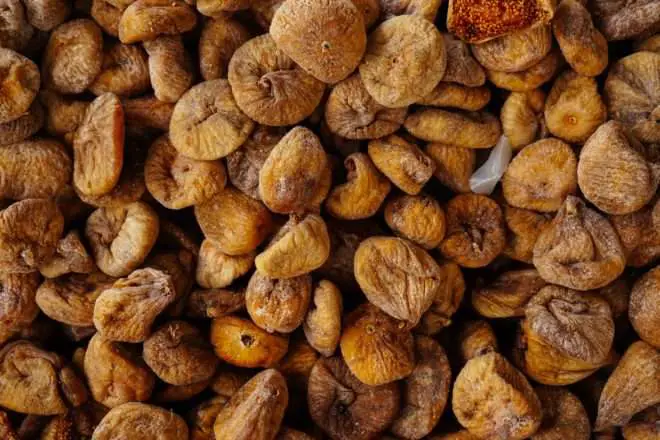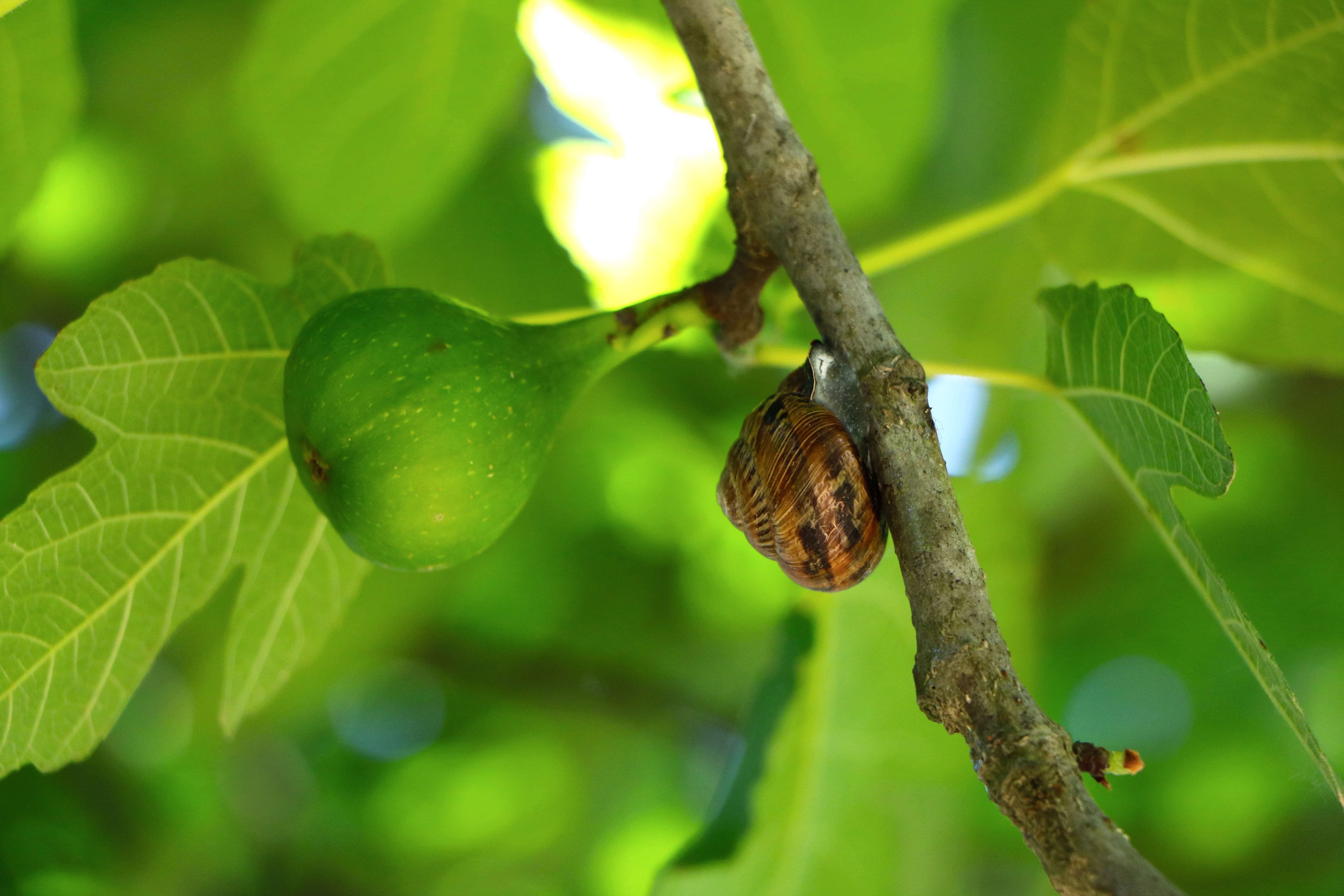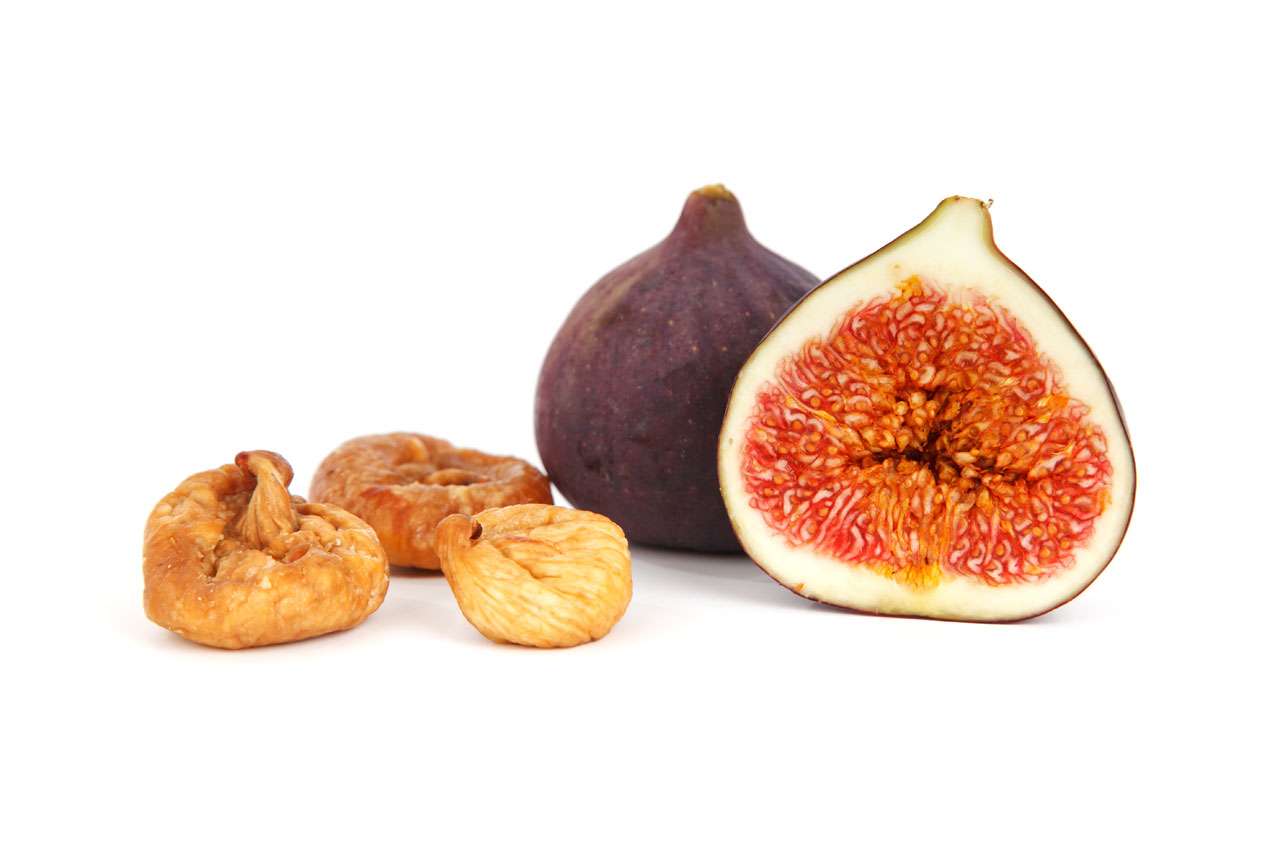When it comes to sweet, nutritious treats, figs are definitely highly underrated. They’re versatile, flavorful, and easy to eat, and they’re far more healthy than other sugary snacks. They offer plenty of fiber along with a variety of healthy minerals, including calcium, magnesium, iron, and potassium, and they also contain the antioxidant vitamins A and K.
But many people miss out on enjoying the full potential of the fig experience. There are many ways to prepare them, and drying is one way to bring out the unique flavor of different kinds of figs.
The key factor, though, is that you have to know how to do it right. It’s important to know the different methodologies when it comes to preparing the figs, and there are multiple ways to dry them effectively.
In this article we’ll cover the 5 methods of drying figs—using a dehydrator, the two methods of sun drying, using an oven, going with an air fryer, or microwaving them. After that, we’ll deal with storage issues if you plan to refrigerate your figs, store them dry or freeze them for a longer period of time.
Table of Contents
How to Prepare Figs for Drying
From August to early October, fresh figs are available and in season. Fresh figs should look plump and soft, with no bruises or cuts. Overripe figs smell sour. Under-ripe figs can be stored at room temperature to ripen for up to 2 days.
Choose and pick plump and soft figs that have no bruises, wrinkles, or splits. Ripe figs with a whitish bloom simply indicate that they are at their peak of the season.
Wipe the skin gently with a damp cloth. Trim off the hard stem. You can either keep them whole or cut it in half lengthwise.

How to Dry Figs in the Sun
This is obviously the most natural way to dry figs, and it’s especially handy if you happen to live in a warm climate. There are two ways of sun-drying figs, but both methods essentially begin the same way.
Method 1
Start by washing the figs—always. Then put them on a paper towel and cut them in pieces. Most people go with halves, but you can also cut them into quarters if you want to dry smaller pieces.
The next step for sun drying is to take either a wood or wire rack and place cheesecloth on top of it. This allows air to flow through, which in turn gives better results when drying.
Once the figs are placed on the cheesecloth, cover them once again with the cloth by folding it over, then tucking it back into the rack. This will help protect the figs from insects while they’re drying.
After that, the power of the sun comes into play. Simply put them outside in a place where they’ll get plenty of sunlight, and let nature do the rest.
You may need to dry them for two or three days to get the drying done completely, and you’ll also need to turn them on a regular basis to make sure the drying continues to be even.
Keep in mind that you need plenty of sunlight to do this. Shade can spoil your figs before they’re completely dried, and you should always remember to bring the figs in at night so overnight condensation and the resulting dew doesn’t impede or ruin the drying process.
Also, extra dehydrating time may be necessary if the figs are larger, or if you’re doing this in a colder area.
When you’re done, the figs should feel leathery, and they obviously need to be completely dry to the point where you can’t detect the presence of any juice.
Store them in an airtight bag, but we’ll have more to say about the different ways of storing dried figs in a later section.
Method 2
The second way to dry the figs in the sun is to perform the initial dry-and-cut process in the same way, then cut pieces of cheesecloth that are just big enough to be wrapped around individual figs.
Wrap the figs individually, then place them in a net bag. The idea behind this method is that the combination of the cloth pieces and the net bag will protect the figs from marauding insects and enhance the drying process as well.
The next steps are slightly more intricate. The best way to dry the halved, wrapped figs is to put them back-to-back, so that more of the flesh of the fig will be exposed to the sunlight.
Hang each piece of fruit with skewers, or expose the cloth to sunlight to complete the drying.
Once again, this will typically take 2-3 days, and you’ll need to keep the figs out of the shade and take them in at night to ensure the integrity of the process.
How to Dry Figs in a Dehydrator
While it might seem like using a dehydrator would dry out the figs, it’s actually one of the best ways to do this. It’s a lot faster than using the sun, and it won’t hurt the overall flavor of the figs at all.
Once again, the process starts with washing the figs. Pat each one down with paper towels of a dish towel to dry them out, then cut the figs into at least two parts using a kitchen knife. This ensures that no moisture or juice will remain in the center of the fig after drying.
After that, place the figs into the dehydrator rack with the cut side up. They should remain in the rack for eight hours with the temperature set at approximately 140 F, and you may need to turn them occasionally for even drying.
The outcome you’re after is simple—the figs should be chewy and supple. Once you’ve reached that point, give them some time on the dehydrator tray to cool and make your decision about possibly storing them.
How to Dry Figs in an Air Fryer
In some ways, an air fryer and a dehydrator are interchangeable when it comes to drying figs, but there are also some important differences.
The biggest is the amount of available space. While dehydrators usually incorporate multiple racks, the open space in an air fryer is much larger, which means you might be able to dry faster due to the fact that the air fryer consistently blows warm air over the figs.
Another benefit of the air fryer is that many families tend to have one. Air fryers are incredibly versatile and can also be used for a variety of cooking tasks, while dehydrators are generally considered specialty appliances.
The process is essentially the same, but there may be some timing differences with the air fryer, so be prepared for some variability. Make sure the air fryer has a vent to allow moisture to escape, and keep a careful eye on the figs, especially the first few times you use this method.
The cooling process is essentially identical, and once again you can store the dried figs in a plastic bag.
How to Dry Figs in an Oven
Oven drying might seem like overkill when it comes to drying figs, but it’s very effective and it brings out the rich flavor of some types of figs. It’s also quick and easy, and the method is similar to using a dehydrator or an air fryer.
Start by preheating the oven to 140 F. The low temperature is designed to provide the same kind of even drying process you got with both kinds of outdoor drying and using the dehydrator.
Once the oven is thoroughly preheated, put the figs in with the cut side facing up. Leave the oven door open a couple of inches to allow air to circulate—you’re drying the figs, not baking them. You can also use a portable fan to help with air circulation, and you can use tongs to turn the figs periodically.
You’ll want to check the figs every couple of hours, depending on how high you set your oven. The normal drying will be 6-12 hours, and you should squeeze the figs periodically to see how dry they are. They should be firm on the outside but soft on the inside, and no juice should be released when you squeeze the figs.
After that, you can let the figs cool and store in an airtight container, and possibly freeze them.
How to Dry Figs in a Microwave
While a microwave might seem like an unlikely option for drying figs, its’ actually a great way to get it done if you’re facing a time crunch.
The preparations are the same for the initial dry-and-cut part of the procedure. Once the figs are cut, place them on a microwaveable plate, face down, with none of the edges touching.
Then, put them in the microwave, set it on high, and microwave the figs for ten minutes. When they’re done, take them out and use a spatula to flip them over and give them another 8-10 minutes in the machine.
This last part is where you get to put your observational skills to good use. If you see the figs starting to shrivel, stop the process and take them out. Be careful about touching them right away, of course, but when you do go to touch them they should be tender and sticky.
Cool them on a rack for a minimum of 30 minutes, then put them in a plastic bag to store.
How to Store Dried Figs
Now that we’ve covered the basic drying methods, let’s take a deeper dive into storing the dried figs.
There are some basic techniques involved in doing this the right way, with the advantage being that dried figs can be stored for up to three weeks, and possibly quite longer if they’re frozen.
As outlined in the earlier sections, figs should be placed in a plastic bag immediately after drying, and this bag should be stored for two days. After that, it’s a good idea to remove the bag from the refrigerator and try to squeeze out as much of the remaining air as possible.
From there you have several options. If they’re completely dry, figs can actually be stored at room temperature, but make sure to use an airtight container if you plan on doing this. They should also be stored in a cool dry place.
If you’re going to store figs in your refrigerator, there are some things you should know in advance. You want to avoid figs that are overripe, which tend to have a slightly sour, fermented smell.

How to Check if Figs are Ripe
The signs of ripeness vary slightly depending on the type of fig. Brown Turkey figs and Calimyrna figs are golden brown in color, and these tend to be the best for drying and storing because their skin is a bit tougher.
With Black Mission figs, you’ll be looking for a purple-black color to indicate ripeness, but be aware that the skin on these figs tends to bruise more easily. This is also true for Green Ishchia figs, which tend to be juicier as well.
Store Dry Figs in a Refrigerator
To refrigerate the ripe figs you select, put the figs on a tray in a single layer, and slide the tray into the coldest part of your refrigerator. This protects the figs from the air ushered in and out by the opening and closing of the refrigerator door, and figs will keep for a couple of days if the coldness is maintained.
Figs should also be stored away from other fresh vegetables in the fridge. This is because figs produce ethylene gas, which can speed up deterioration in your veggies as well.
Freeze your Dried Figs
If you’re going to try to freeze your figs, there’s another trick you can do to help enhance their longevity by creating a batch of syrup using either sugar or honey.
If you’re going with honey, the ratio is two parts mild honey to every three parts of water. If it’s sugar, it’s three parts sugar to every four parts of water. Make sure you chill the mixture after you’ve blended it, then apply it to the figs.
Leave a small amount of space between the syrup and the top of your freezer container, and make sure the figs are in the coldest section of the freezer.
Make sure to force as much air out of the container as well, as this will help keep your figs from getting too dry. This will help ensure that the figs don’t dry out if you’re freezing them for an extended stretch.
How to Use and Rehydrate Dried Figs
Commercially available figs are in dried or processed form, as fresh figs cannot be transported well across the globe.
Figs can be used in cooking as fresh or dried. They are flavorful at room temperature. It tastes like a raisin but less intense than dates, but it is creamy and sweet.
Use dried figs anywhere you would normally use a date, whether it be in desserts, smoothies, or dried granola bars. It is also used in making jams.
To rehydrate dried figs, soak them in water for 30 minutes before using. The soaking water can also be used in your recipe if it calls for water.
Nutritional Value of Dried Figs
Figs provide the following health benefits:
Fiber
Figs are a great source of dietary fiber with 4 t-5 grams per fruit as compared to dates. Because of this, figs are also linked to good digestion, relieves constipation, and promote a healthy heart.
Low sugar
Dried figs contain 7 -10 grams less sugar than dates per weight. Since figs are high in fiber and low in sugar, they’re better than dates.
High mineral-content
Figs are high in iron, magnesium, calcium, and zinc.
Low calories
Fig has 15% fewer calories than dates.
More Information About the History of Figs
Fig or Ficus carica belongs to the mulberry family. This flowering plant is native to the Middle East and West Asia, cultivated since ancient times and is now grown across the Mediterranean with hundreds of different varieties.
Ficus carica is a tree that grows up to 7–10 meters high and with smooth white bark. Its fragrant leaves measure 12–25 centimeters long and 10–18 centimeters wide. The leaf has three or five lobes each.
The edible fruit measures 3-5 centimeters long, has an oval or pear shape, with thin green skin that turns purple or brown when ripe, and encloses
hundreds of seeds encased in a succulent, soft, and fibrous red or purple flesh.
Figs have been common among the Romans during the time of Cato the Elder. In 160 B.C., he listed several types of figs grown at that time in his De Agri Cultura handbook. The fruit is used to fatten geese to produce what is now known as foie gras.
It was even reported that Emperor Augustus has been poisoned with figs from his garden when his wife Livia smeared it with poison. No wonder, a variety of fig cultivated in Rome was named Liviana.
Italian immigrants spread throughout the northeastern part of the US had this old (and odd) tradition of protecting fig trees from the freezing cold of winter.
They dug a trench relative to the size of the tree, a part of the root ball was cut, and the tree is bent into the hole. It often was wrapped in waterproof material to prevent mold and fungus from developing. Then it would be covered with soil and leaves.
To secure the tree in place, a piece of plywood or corrugated iron sheet is placed on top. However, this is no longer practiced as the low winter temperature has become milder and tolerable.
Conclusion
You now how a few techniques of drying figs. It’s pretty easy to dry them with the sun, a microwave, a dehydrator, an air fryer, and a microwave. The choice is yours!
My grandmother has taught me to like figs. Not only are figs sweet and tasty, but they are also rich in minerals and dietary fiber. This is a good reason enough to enjoy this fruit more often.
Try dried figs in bars, pies, or smoothies. Check out our dried fig recipe here. Let us also know if you have any information about dried fig that you would like to share with us.
Also, be sure to check out the food dehydrators we recommend as well. Thank you!

